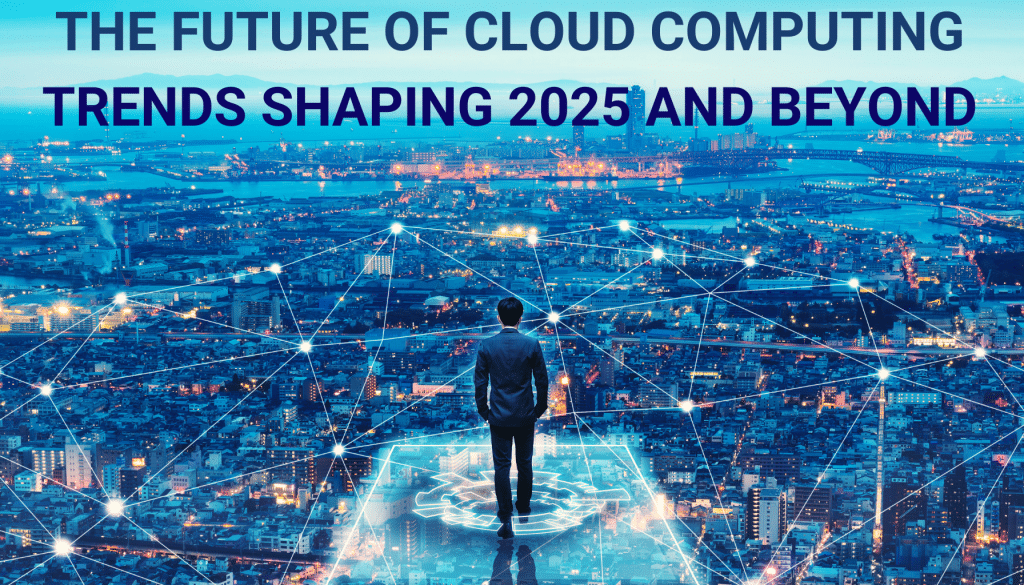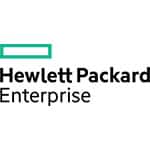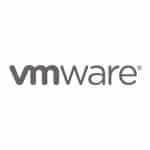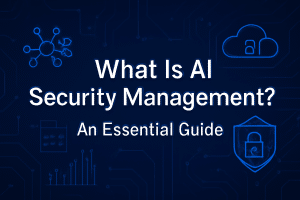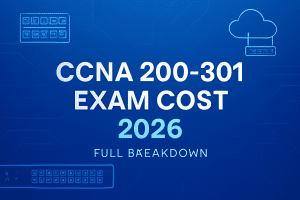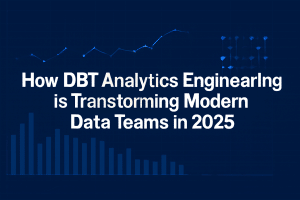Cloud computing has evolved from being a tool for storing data or running basic applications. In 2025 and beyond, it’s set to evolve into a much more integrated and powerful force, transforming industries and reshaping how businesses operate.
What was once a simple service is now the backbone of modern business, driving everything from automation to data analysis and even supporting the rapidly growing Internet of Things (IoT).
The future is bright for those looking to enter the cloud computing field, with countless career opportunities in roles like cloud architecture, security, and data science. If you’re just starting, exploring the Easiest Cloud Computing Certifications can help you build a solid foundation and break into the industry with the right credentials.
In short, the cloud is not just a trend, it’s a foundational technology changing how we live and work.
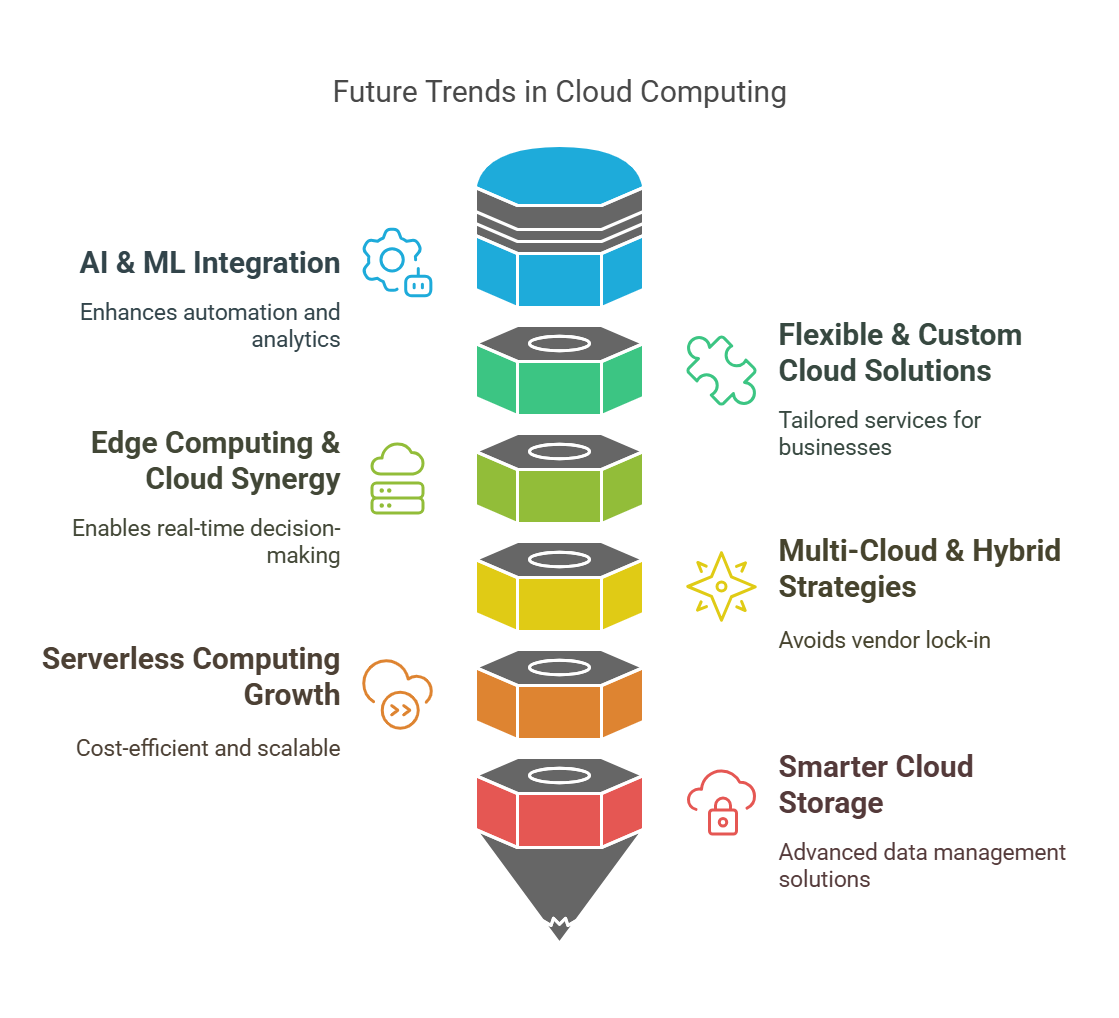
The Power of Artificial Intelligence and Machine Learning in Cloud Services
One of the biggest developments in cloud computing is the integration of Artificial Intelligence (AI) and Machine Learning (ML) technologies. These tools are no longer used only by big tech companies; they are becoming standard features in cloud services.
For instance, AI-powered cloud solutions can analyze data, spot trends, and make decisions in real-time. Companies can make smarter choices, predict customer behavior, and optimize operations without needing a dedicated team of data scientists.
AI is also enhancing automation among cloud architect and cloud computing professionals. In the past, businesses had to manually monitor their IT infrastructure and respond to issues as they arose. Now, with AI integrated into cloud systems, companies can use predictive analytics to spot issues before they happen and automate many routine tasks, saving time and resources.
With the increasing demand for AI-driven cloud solutions, professionals aiming for high-paying jobs should look into the Highest-Paying Cloud Computing Jobs to identify career paths with the most potential.
Flexibility and Customization: Tailoring the Cloud Computing Skills to Fit Business Needs
The future of cloud computing careers is not just about offering storage and processing power; it’s about providing businesses with the flexibility to customize and scale their systems to fit their needs.
Cloud solutions are moving away from being “one-size-fits-all” products and are becoming more personalized. Businesses can now choose the exact mix of cloud services they need, whether it’s public, private, or hybrid cloud or a combination of multiple cloud providers.
This flexibility allows businesses to select the best services that fit their unique requirements, whether it’s optimizing cost, improving performance, or ensuring security. As organizations embrace multi-cloud environments, professionals need to keep up with evolving cloud certifications. If you’re aiming for credentials that can set you apart, consider The Hardest Cloud Computing Certificationsfor an in-depth look at advanced certifications.
As cloud solutions grow more dynamic, AI and ML enhance this flexibility. These tools enable cloud services to automatically adjust to business needs, whether that’s scaling up to meet higher demand or shifting workloads between different environments based on performance requirements.
This level of adaptability for a cloud administrator makes cloud computing not just a tool for hosting services but a dynamic, evolving platform that can meet the constantly changing needs of modern businesses.
Real-Time Insights and Predictive Analytics: Cloud Becoming Smarter
AI and ML integration is also driving the shift from traditional cloud services to smarter, real-time systems. Businesses are no longer relying on past data to make decisions—they can analyze and act on data as it’s generated. Cloud systems with AI can spot patterns, trends, and anomalies in real-time, providing businesses with actionable insights almost immediately.
For example, an e-commerce platform can use AI-driven cloud solutions to analyze customer behavior as they browse, predicting which products they’re most likely to purchase and providing tailored recommendations right on the spot.
Furthermore, predictive analytics, powered by AI and ML, is allowing businesses to anticipate future needs and challenges. Companies can now forecast demand, optimize inventory, and even predict potential disruptions before they happen, all by leveraging the cloud’s computing power and AI’s intelligence.
This ability to act on real-time data is one of the key shifts that’s making cloud services more dynamic and valuable.
Edge Computing and Traditional Cloud Computing
Some may think of edge computing as replacing cloud computing, but the two work well together. While edge computing handles real-time, low-latency tasks, traditional cloud computing is still the go-to for more heavy-duty, large-scale tasks like data storage, backups, and machine learning.
Edge computing can handle the “here and now,” while cloud computing manages the “big picture” and long-term storage needs.
In fact, many organizations find that the best approach is a hybrid model, using both edge and cloud computing. For instance, you might process real-time data at the edge but still upload important insights to the cloud for further analysis and long-term storage.
This collaboration lets businesses take full advantage of both technologies.
1. Smart Cities
Edge computing is at the heart of making cities smarter. With thousands of sensors placed throughout urban areas, edge computing processes data on-site, whether it’s from traffic lights, street cameras, or environmental sensors. Instead of sending everything to a faraway data center, these devices can make decisions immediately.
For instance, traffic lights can adjust based on traffic flow in real-time, and public safety cameras can flag incidents instantly without delay.
2. Autonomous Vehicles
Autonomous vehicles rely heavily on real-time data from cameras, sensors, and radar. For these vehicles to make quick decisions, they must process data locally without relying on a distant cloud server.
Edge computing enables vehicles to process this information on the spot, allowing for split-second decisions that could be crucial for safety.
3. Healthcare
In healthcare, edge computing is revolutionizing patient care. Medical devices can continuously gather vital patient data, such as heart rate, temperature, or oxygen levels.
This data can be analyzed in real-time at the edge, alerting healthcare providers to potential issues before they become critical. This reduces response times and improves patient outcomes.
4. Industrial IoT
Factories and manufacturing plants increasingly use IoT devices to monitor everything from machinery health to inventory. With edge computing, data from sensors on the shop floor can be processed locally, allowing immediate corrective actions.
This could mean preventing costly downtime or improving production efficiency without waiting for data to be sent to the cloud.
5. Retail
In retail, edge computing can enhance customer experiences by processing in-store sensors and cameras data.
Retailers can track inventory levels in real time, adjust promotions dynamically based on foot traffic, and even offer personalized recommendations without sending all data to the cloud.
What’s Next for Edge Computing?
As we look ahead, edge computing will continue to evolve alongside new advancements in AI, 5G, and IoT. 5G networks, in particular, will significantly enhance the capabilities of edge computing. With faster speeds and lower latency, 5G will help edge computing scale even further, allowing for a broader range of applications, especially in areas like autonomous vehicles and remote surgeries.
The Growing Role of Multi-Cloud and Hybrid Cloud Strategies
Cloud computing is no longer a buzzword, it’s a necessity for businesses striving for efficiency, scalability, and flexibility. Over the past few years, multi-cloud and hybrid cloud strategies have become central to how organizations approach their cloud infrastructure.
These approaches allow businesses to diversify their cloud resources, enhancing performance, security, and flexibility. But why are more and more businesses turning towards these strategies? Let’s dive into the reasons behind this shift.
Avoiding Vendor Lock-In
One of the main reasons companies are shifting to multi-cloud and hybrid cloud strategies is to avoid being overly dependent on a single cloud service provider. When a business relies solely on one provider, they risk being stuck with a particular set of tools, pricing, and limitations.
By using multiple cloud providers, businesses can pick the best services from each and avoid being tied to one vendor’s ecosystem. It’s like shopping around for the best deal, companies want to ensure they aren’t locked into one option that may not serve them well in the future.
For IT professionals looking to advance their careers, multi-cloud expertise is becoming an essential skill. If you’re considering certification options, Top Cloud Computing Certifications can help you choose the right path for professional growth. For professionals aiming to validate their expertise, obtaining certifications is crucial. Platforms like Cert Empire offer trusted study materials to help candidates prepare for industry-recognized cloud certifications.
Maximizing Flexibility and Control
A hybrid approach, where on-premises resources are combined with public cloud services, offers businesses more flexibility and control. This flexibility lets businesses decide which workloads are best suited for private clouds (for reasons like security or compliance) and which can be placed on public clouds (for scalability and cost-effectiveness).
The hybrid cloud setup gives businesses the ability to customize their infrastructure in ways that pure public or private clouds simply can’t.
Improved Performance
Distributing workloads across multiple cloud platforms can boost performance. For instance, a company might use one cloud provider’s infrastructure for high-demand, compute-intensive applications and another for cost-effective storage. This helps ensure that no single cloud platform gets overloaded, and businesses can optimize the performance of each individual workload.
Disaster Recovery and Redundancy
Multi-cloud strategies enhance disaster recovery. If one cloud provider experiences downtime or has an outage, the business can switch to another cloud provider to keep its services running. Having data in multiple locations, spread across different clouds, offers greater resilience. The peace of mind that comes with knowing your data and applications are protected in case of failure is driving more companies to adopt these strategies.
Looking Ahead: The Future of Multi-Cloud and Hybrid Strategies
As cloud technology continues to evolve, it’s clear that the trend towards multi-cloud and hybrid solutions isn’t going anywhere. With the benefits of flexibility, cost savings, and scalability, businesses increasingly consider these strategies essential components of their long-term IT plans.
However, the challenges associated with these approaches, such as complexity, integration, and security, will require businesses to remain vigilant and innovative in managing these diverse environments.
For businesses adopting multi-cloud and hybrid strategies, the future holds exciting possibilities. With continued advancements in cloud interoperability, integration tools, and automation, businesses can streamline their cloud operations, reduce complexity, and maximize the value they get from each cloud provider.
Serverless Computing: A Game-Changer in Cloud Efficiency
Serverless technology has quickly emerged as a game-changer. You’ve probably heard the term thrown around, but what exactly is it? Serverless computing allows developers to run applications and services without worrying about managing the underlying infrastructure.
Sounds pretty cool, right?
But what makes it such a big deal, and why is it slowly becoming the go-to for businesses aiming to enhance efficiency and cut down on costs? Let’s break it down.
Cost Efficiency
In traditional cloud environments, businesses have to pay for server instances, even if they’re not fully utilized. Think about the hours when your application doesn’t get a single hit but the server’s still running and costing you money. That’s where serverless computing shines. With serverless, you pay only when your functions run. No more throwing money away on idle resources.
Faster Development and Deployment
Serverless allows developers to focus on building and deploying their code without worrying about managing the infrastructure. Need to deploy a feature? You just write the code and deploy it directly to the serverless platform. This speeds up software development and cycles and reduces time to market for new products and features. It cuts down on the overhead of system maintenance and scaling, which usually slows things down.
Auto-Scaling at Its Best
One of the most powerful aspects of serverless computing is auto-scaling. Traditional cloud infrastructure often requires you to manually scale up or down to accommodate demand. With serverless, the platform automatically scales your app based on the incoming load. If your application experiences a sudden surge in traffic, the serverless platform automatically allocates more resources to handle it. No need to worry about provisioning servers or managing performance bottlenecks. It’s like having a magic scaling switch that flips when needed.
Focus on Business Logic, Not Infrastructure
Traditionally, developers had to spend a significant amount of time configuring and maintaining infrastructure, whether it’s servers, networks, or databases. Serverless computing flips the script by allowing developers to focus on what matters: the application logic. With serverless, businesses can get their apps running faster without the burden of managing the underlying hardware.
What’s Next for Cloud Storage and Data Management?
The cloud has already revolutionized how businesses store, access, and manage data. But this is just the beginning. As data continues to grow at an explosive rate, cloud providers are stepping up their game, finding new ways to handle massive datasets, enhance performance, and make it easier for companies to leverage their data.
From advanced storage solutions to more efficient data lakes, the future of data management in the cloud looks pretty exciting.
The Growing Need for Smarter Data Management
Today, data is at the core of nearly every business operation. From customer insights to operational efficiency, businesses rely on their data for everything.
As companies collect more and more data, whether it’s from IoT devices, user interactions, or cloud applications, managing that data becomes more complex. Cloud storage solutions that could handle gigabytes of data just a few years ago are now being stretched to their limits as terabytes, petabytes, and even exabytes of data pile up.
This has pushed cloud providers to think outside the box and come up with strategies to store and manage data in ways that weren’t possible before. So, what are some of the upcoming trends in cloud storage and data management?
The Shift Toward Data Lakes
One of the most significant developments in data management is the rise of data lakes. Traditionally, businesses stored their data in structured formats like relational databases or file systems. This worked well for a while, but the problem is that a lot of data isn’t neatly structured.
Enter data lakes. A data lake is a storage system that can handle all types of data, structured, semi-structured, and unstructured. It’s like a big pool where companies can dump all their data in its raw form and later analyze it using machine learning, analytics, and other advanced tools.
These data lakes allow businesses to work with data in a more flexible way, without worrying about structure.
Big names in cloud like AWS (with S3), Azure (with Data Lake Storage), and Google Cloud are putting a lot of effort into improving their data lake offerings.
They’re focusing on making it easier to store, secure, and analyze massive datasets, ensuring that companies don’t run into limitations as their data needs grow.
What Will Cloud Computing Look Like in 2030?
Cloud computing has already changed the game, but what’s next? As we hurtle towards 2030, the transformation of cloud tech seems inevitable, but the specifics? Well, those are still up for grabs. The combination of cutting-edge advancements like 5G, AI, and an increasingly interconnected digital ecosystem could completely reshape the cloud landscape.
So, what will cloud computing look like in 2030? Let’s dig into it.
A Bigger, Faster, More Flexible Cloud
Cloud computing has always been about giving users access to the power and resources of remote servers without needing to manage the hardware. This has allowed businesses to scale their operations without worrying about physical infrastructure.
But by 2030? Expect the cloud computing trends to go even further.
One of the key drivers behind this is 5G. It’s not just about faster internet. With 5G’s super-low latency and massive capacity, the way cloud computing operates will be transformed.
We’ll see more real-time interactions between devices and the cloud. Think autonomous vehicles streaming data back to the cloud in real-time or edge computing that feels almost instant.
Edge Computing: The New Norm
With 5G pushing for faster speeds, edge computing will become more central to cloud’s evolution. Right now, much of the data from devices gets sent to the cloud to be processed.
But when you add in 5G, this idea of sending everything to the cloud starts to feel inefficient, especially for things like smart cities or IoT networks that need near-instant data processing. So, more data will be processed at the edge, closer to where it’s generated.
By 2030, expect a seamless blend between cloud and edge. Cloud providers will work alongside local processing to make sure data can be analyzed and acted upon faster than ever.
This means less waiting around for data to make its way back from a distant server. Instead, the organization’s cloud infrastructure will be distributed across many devices, making computing feel more fluid.
Conclusion
Cloud computing by 2030 will be faster, smarter, and more integrated than ever before. With the help of 5G, AI, and decentralized systems, the cloud will play an even more vital role in every part of our lives, from real-time decision-making to immersive virtual experiences.
But with this massive growth comes the need for better security, smarter infrastructure, and a focus on sustainability.
The cloud won’t just be for big tech companies or large enterprises. By 2030, the cloud will be something that almost everyone uses in some form, and with the changes ahead, it’ll be easier, faster, and more cost-effective than we ever thought possible.
FAQs
How will cloud computing change in 2025?
In 2025, cloud computing will become faster and more adaptable, with the rise of edge computing and AI-driven automation.
What are the top trends in cloud computing for 2025?
Edge computing, multi-cloud strategies, and quantum cloud computing will lead the way, making cloud services more flexible and powerful.
Is cloud computing a good career path for the future?
Yes, demand for cloud professionals is growing, with skills in cloud architecture, cloud security engineer, and DevOps being especially in demand.
What impact will quantum computing have on cloud services?
Quantum computing will supercharge cloud services, solving complex problems faster and offering new capabilities for data processing.
How can businesses ensure cloud security in 2025?
Businesses will need to have cloud security knowledge, adopt new security frameworks and use advanced tools like AI-driven threat detection to protect cloud data.

